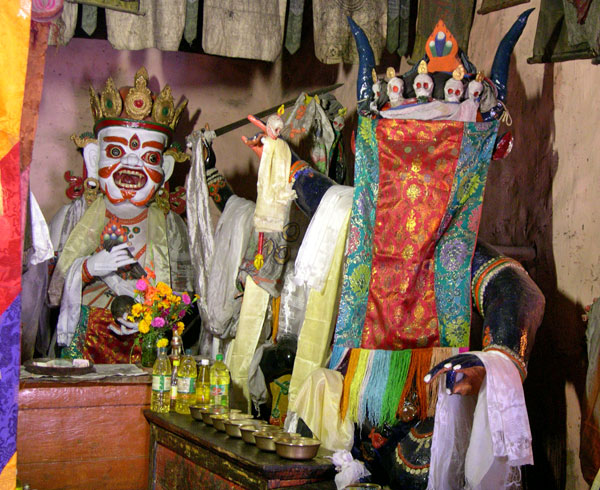Diskit Monastery

Facts and practical information
Nestled amidst the rugged terrains of the Nubra Valley in Ladakh, India, Diskit Monastery stands as a testament to Tibetan Buddhism's enduring spiritual legacy. Founded in the 14th century by Changzem Tserab Zangpo, a disciple of Tsong Khapa, the monastery is the oldest and the largest in Nubra. Perched on a hill at an altitude of 3,144 meters above sea level, it offers a serene escape and panoramic views of the surrounding stark landscape.
Diskit Monastery, also known as Diskit Gompa, is renowned for its rich collection of Buddhist artifacts, ancient murals, thangkas, and frescoes. It is home to a towering 32-meter statue of Maitreya Buddha (the Buddha of the future), which was consecrated by the Dalai Lama to promote world peace and to protect the region from war. This impressive statue has become an iconic symbol of the monastery and can be seen from afar, adding a sense of tranquility to the Nubra Valley.
The monastery belongs to the Gelugpa sect, also known as the Yellow Hat sect of Tibetan Buddhism, and serves as a critical center for Buddhist learning and culture. It comprises several shrines, a Tibetan-style assembly hall, and a school run by the monks that educates local children in both spiritual and secular subjects.
Diskit Monastery is also famous for its annual Dosmoche festival, a vibrant celebration that attracts tourists and devotees alike. During the festival, monks perform sacred Cham dances wearing colorful robes and elaborate masks, symbolizing the victory of good over evil.
Visitors to Diskit Monastery are rewarded not only with spiritual enrichment but also with the opportunity to explore the surrounding areas, including the Hunder sand dunes and the confluence of the Shyok and Nubra rivers. The journey to the monastery itself is an adventure, involving a drive through some of the world's highest motorable passes.
Diskit Monastery – popular in the area (distance from the attraction)
Nearby attractions include: Hundur Monastery, Diskit.









